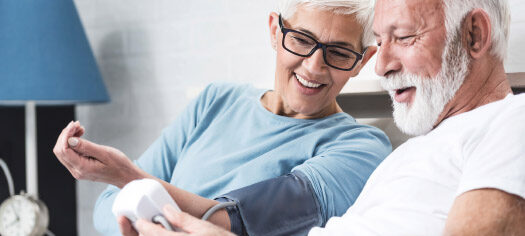Getting Seniors to Accept Remote Patient Monitoring
The benefits of telehealth and remote patient monitoring have been well documented. This was especially true during the past year when an explosion took place in virtual healthcare adoption. This was mainly due to the Covid-19 Pandemic you may have heard about. In order for the technology to truly be utilized, healthcare practitioners and RPM providers must educate patients, particularly the elderly, on benefits of use and proper ways to incorporate it into their daily lives. Let’s take a look at some of the benefits and challenges to getting seniors to accept remote patient monitoring as a trustworthy method of healthcare. We’ll review the benefits first.
Easily Accessible Healthcare
Remote patient monitoring allows elderly patients to avoid having to worry about how to get to their appointment. This is a stressful part of healthcare for seniors as they are not as mobile as they once were. Many times, patients have to rely on others to get them to and from their traditional appointments. With RPM, seniors are able to keep up with regularly scheduled wellness visits without having to rely on others.
Ongoing Monitoring at home
Remote patient monitoring allows doctors to track biometric data to customize treatment plans for patients. With doctors and visiting nurses able to track a patient’s biometric data essentially 24/7, healthcare providers have more information to provide the best care at the right time. This is especially true and beneficial or those with chronic illnesses. Those patients could develop additional healthcare problems if not diagnosed early. Continuous RPM monitoring can alert providers of any issues and treat before it becomes worse.
Prevention of Hospitalization and Readmission
By taking a proactive approach to managing healthcare, both providers and patients can reduce or avoid complications to avoid hospital admissions. For example, lets say that a doctor is monitoring an elderly patient that has a long history of heart disease. The doctor is alerted to a sudden increase in blood pressure. The doctor is able to contact the patient to start a new treatment plan before the condition gets worse and causes a heart attack. The American Heart Association supports RPM and offers their own guidance for use – Using Remote Patient Monitoring Technologies for Better Cardiovascular Disease Outcomes
Once a patient is discharged from the hospital, RPM can also help to avoid readmissions. This alleviates additional strain on healthcare services and helps counteract growing hospital bed shortages.
While the benefits far outweigh the challenges, there are some items that need to be addressed before RPM will truly become mainstream for seniors.
Technological Divide
The largest obstacle with using remote patient monitoring for older users is operability. A study revealed that 81% of Americans aged 60-69 use a smartphone. However, as they age past 70 the tech-literacy tends to decrease significantly — smartphone users drop down to just 62%. Additionally, the devices and process need to be robust enough where assistance can be provided remotely as needed, but also simple enough to be explained over the phone if a user is having difficulty.
Missing Data & Proactive Monitoring Support
Consistent use is a key component of a successful RPM program. If an organization is established to monitor a set group of patients, the clinical monitoring professionals will be alerted if a device hasn’t sent data for a pre-determined amount of time. A push notification can be automatically sent to the mobile device of that patient that they will be required to acknowledge.
Distrust
Some elderly patients don’t trust remote patient monitoring and prefer traditional office visits that they’re used to. Studies show that 30% of seniors feel that they do not want to share their private medical data with anyone, let alone via an app on their phone.
Educating these patients on the benefits of RPM for not only their own health, but daily lifestyle, will significantly help to overcome this mistrust. Demonstrating proper usage of devices will also help alleviate fears of new technology.
Conclusion
The virtual healthcare advancements seen in the past decade, specifically the incredible rate of adoption during the Covid-19 pandemic, will undoubtedly continue. The convenience of receiving care without having to leave home is something that is routinely listed as a major benefit of telehealth. When coupled with the biometric data received though remote patient monitoring, healthcare professionals are able to provide better outcomes for their patients. Patients like the convenience of RPM and freedom it provides overall.
Educating seniors and being patient as they get used to a new way of receiving healthcare will eventually lead to increased adoption and enhanced care for all.
Schedule a brief introductory call

Respect to article author, some excellent information .